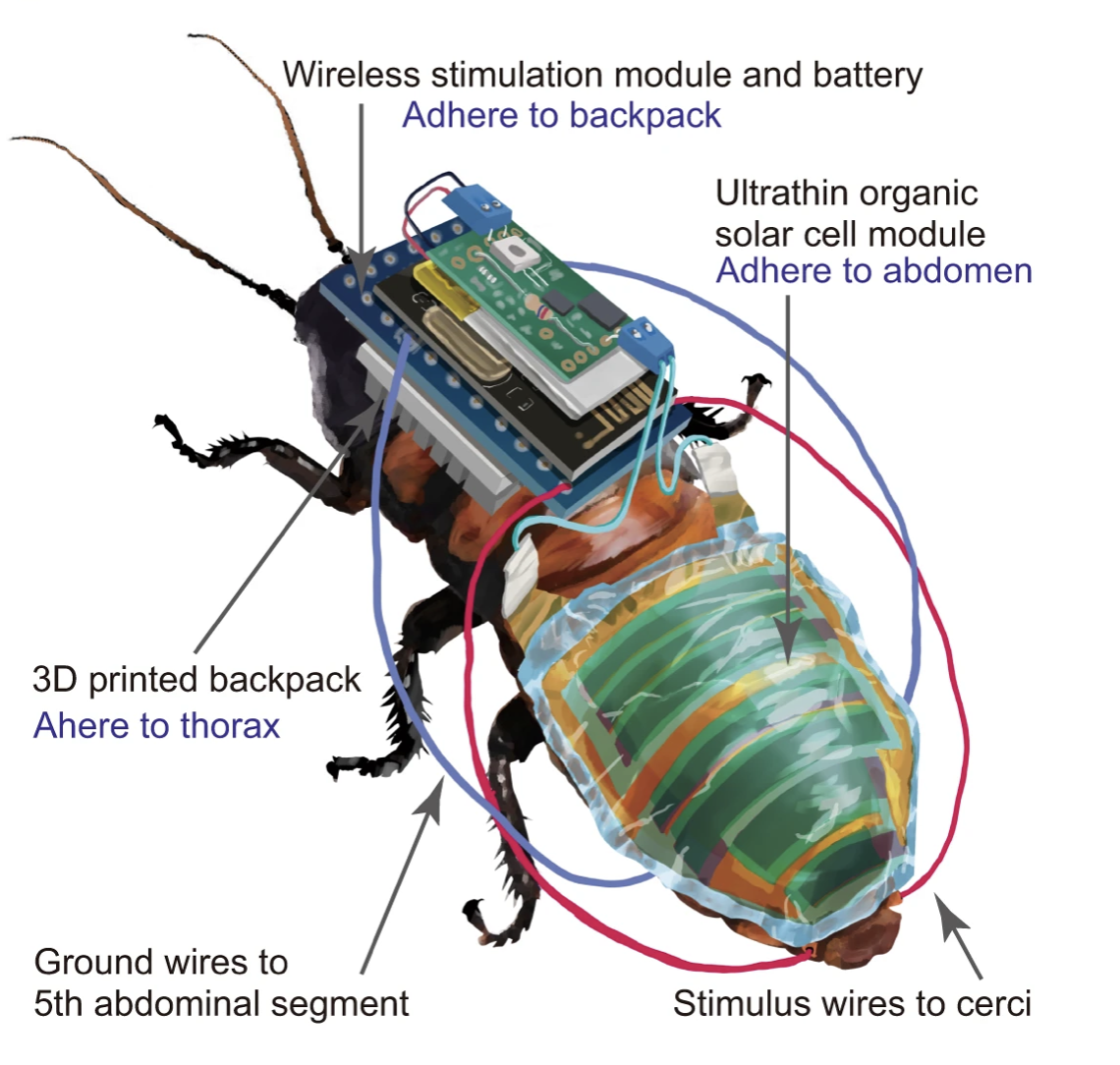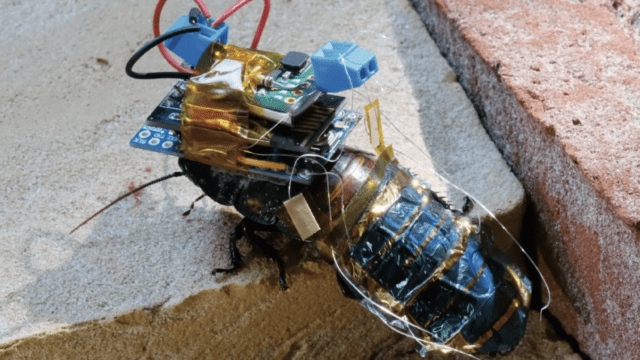The next time you move to squish a cockroach, you may want to pause before your shoe delivers the finishing blow. One of the earth’s most infamous insects could become its cyborg saviour, according to a recent study by Japanese researchers.
Earlier this month, the researchers from the Riken Centre for Emergent Matter Science unveiled what they’re calling a “rechargeable, remote-controllable cyborg cockroach” that could be used in search and rescue operations, environmental monitoring, and the inspection of dangerous areas. Describing their setup as “part insect, part machine,” a living cockroach is equipped with a 3D-printed mini backpack packed with slew of devices to help scientists control the insect’s movements from afar.
To get the roaches to go where they want them to go, scientists attach wires to the insect’s cerci, which are paired appendages at the rear of the abdomen, and apply electrical stimulation. Stimulation to the right cerci makes the cockroach go right, while stimulation to the left cerci makes it go left, the researchers explained.
Meanwhile, to power the electronics in their cyborg cockroach, the team included a lithium-polymer battery in the backpack. A very thin organic solar cell was attached to the cockroach’s abdomen to keep power flowing to the electronics. The organic solar cell was 4 microns thick and flexible, made to not hinder the cockroach’s movements or affect its exoskeleton.
According to the researchers, batteries are more important in these scenarios than we might think. Researchers need to be able to control the cockroaches for long periods of time and need to be able to keep the battery charged. The team claimed that currently, batteries can be limiting in other devices used to monitor hazardous areas, Reuters reported.
“The batteries inside small robots run out quickly, so the time for exploration becomes shorter,” Kenjiro Fukuda, the senior research scientist at the RIKEN Thin-Film Device Laboratory who led the project, told the outlet. “A key benefit (of a cyborg insect) is that when it comes to an insect’s movements, the insect is causing itself to move, so the electricity required is nowhere near as much.”
Developing a system that delivered enough power and allowed the cockroach, which has a small surface area, to move normally was another challenge. For the study, researchers chose Madagascar hissing cockroaches because they were big enough (approximately 6 cm, or 2.3 inches) to carry the electronics, bore a wide enough carapace for a solar panel, and had no wings to get in the way.

However, as the team explained in their article in Nature, they overcame this challenge by combining ultrathin film electronics with “an adhesive–nonadhesive interleaving structure” to attach the organic solar cell to the cockroach’s abdomen on the dorsal side. This was necessary because the cockroach’s abdomen changes shape and portions of its exoskeleton overlap. The backpack, on the other hand, was attached to the top of the cockroach’s thorax.
With this system, the organic solar cell achieved a power output of 17.2 mW, which lead researcher Fukuda said is 50 times more than current energy harvesting devices for living insects. The cockroach was also able to right itself when it was flipped over more than 80% of the time.
This doesn’t mean that the cyborg cockroaches are ready to go into hero-mode, though. According to Reuters, in a recent demonstration, when researchers instructed a cyborg cockroach to go left using a specialised computer and Bluetooth, the insect scrambled in that general direction. Yet, when they told the cyborg bug to go right, it ended up turning in circles.
The researchers said they aren’t done outfitting the cyborg cockroaches. Next, their goal is to shrink the components even more to help improve mobility and make room for other devices, including sensors and cameras.
Furthermore, cyborg cockroaches might just be the beginning, Fukuda said, pointing out that the system can be adapted for other insects, such as beetles or flying cicadas, in the future. Now, I know this all for a good cause and all, but considering I scream and run away every time I see one of these insects, it’s going to take some getting used to. In other words, take all the time you need, folks.
